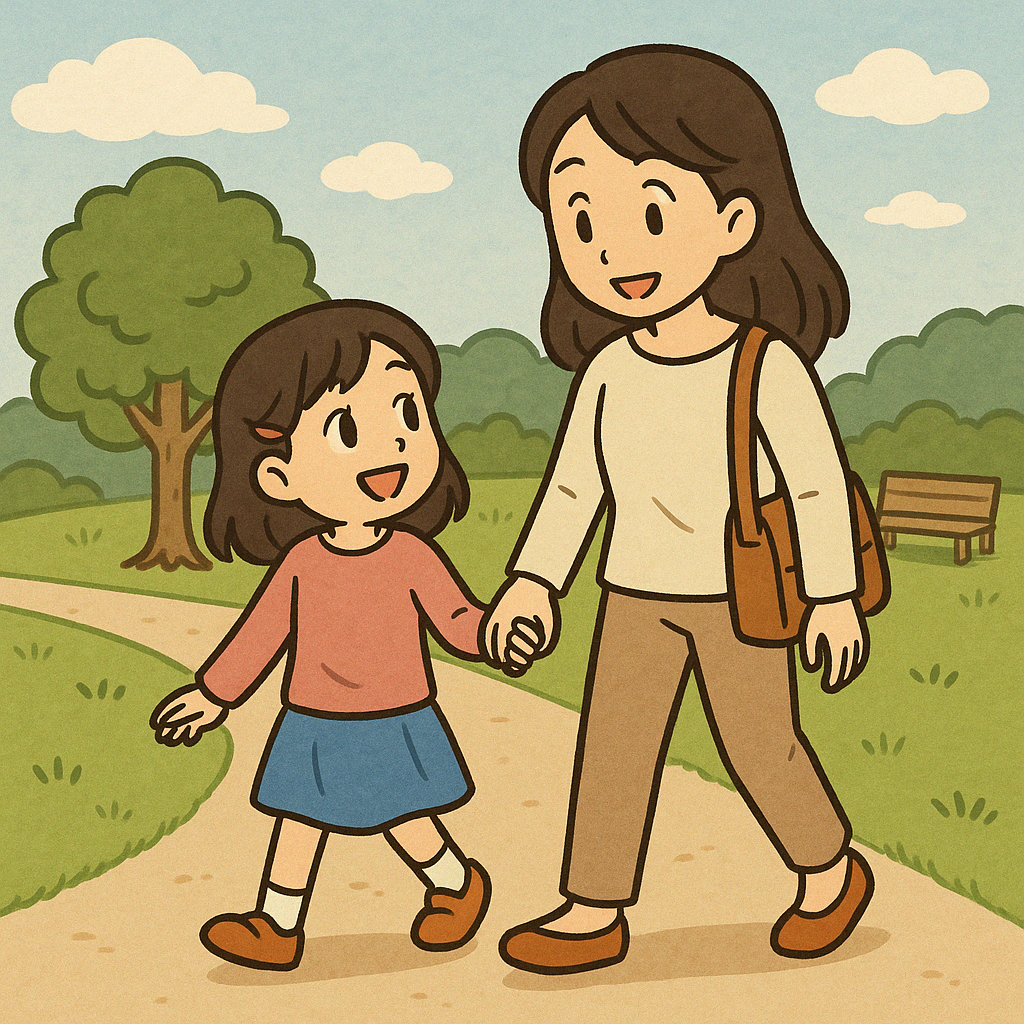人と動詞
Grammar meaning
This grammar point is used when you do something together with a specific person.
By connecting the person and the verb using the particle “と” (to), the sentence expresses that you are doing the action together with that person.
This grammar can express a stronger sense of doing something together with someone by adding the word “いっしょに” after the particle “と”.
This grammar can also be used not only with people, but also with animals, groups, or any other nouns that you can do something together with.
Example sentence
・お母さんといっしょにこうえんへ行きました。
I went to the park with my mother.
・来週、友だちとサッカーをします。
I will play soccer with my friend next week.
・毎日、ペットの犬といっしょにさんぽしています。
I go for a walk with my pet dog every day.

Additional notes
We won’t go into detail this time, but the particle “と” is also used to mean “and” in English.
This is different from the grammar point we are focusing on now, so please be careful.
For example, in the sentence “山田さんと小林さんといっしょにえいがをみます”, the first “と” between “山田さんと小林さん” means “and”, while the second “と” in “小林さんといっしょに” means “with”.
Also, when you go somewhere alone and not with someone else, use the phrase “一人で”.
・Q:だれといっしょに本を読みましたか。
A:一人で本を読みました。
Q: Who did you read the book with?
A: I read the book alone.

Conversation example
先生:きのう何をしましたか。
学生:レストランへ行きました。
先生:いいですね。だれといっしょに行きましたか。
学生:となりのクラスのリンさんと行きました。
先生:何を食べましたか。
学生:わたしはラーメンを、リンさんはハンバーグを食べました。
先生:リンさんといっしょにかえりましたか。
学生:いいえ、一人でかえりました。
Teacher: What did you do yesterday?
Student: I went to a restaurant.
Teacher: Sounds nice. Who did you go with?
Student: I went with Lin-san from the class next door.
Teacher: What did you eat?
Student: I had ramen, and Lin-san had a hamburger.
Teacher: Did you go home together with Lin-san?
Student: No, I went home alone.

For Japanese Teachers
This grammar point is relatively easy to introduce in class.
One thing to be careful about is not to confuse it with other uses of the particle “と”.
However, if you are teaching this usage first, there is no need to mention the other meanings at this stage.
Instead, it is sufficient to address the differences when introducing the other uses later on.
Although the expression “一人で” is also introduced here, it belongs to a different grammatical category.
If you are concerned about teaching multiple grammar points at once, you may choose to omit it.
That said, in my experience, including it in the same lesson is often beneficial, as it helps broaden the range of expressions students can use and requires little additional effort to introduce.



